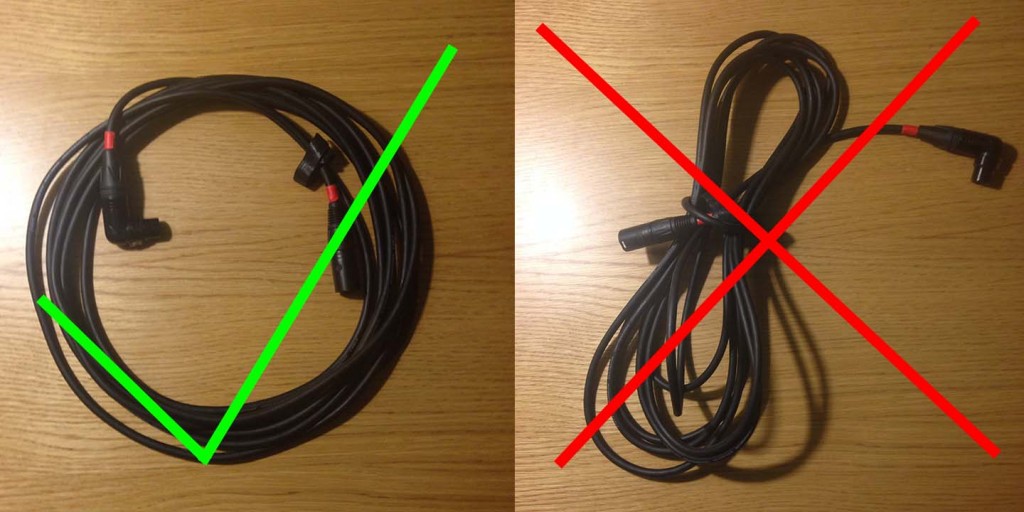For most of our lives we have been taught how to handle cables incorrectly. We grow up learning how to take extension cords or rope and wrap them around our arm and tie them off. Probably not a big deal for rope or even some extension cords. However, for audio cables like XLR cables and even the Cinema Studies stingers (umm, extension cords), we’d like you to learn how to properly roll and store these cables. This will prevent the cable from tearing inside the sheathing and allow you quickly to unroll them.
Imagine you’re a PA or intern on a set. You want to make a great impression, right? You’re asked to clean up some cables on set. You expediently wrap up the cables like your grandpa taught you to do with rope or extension cords. When your supervisor comes back and you’re smiling with pride with the job you just did, you get chewed out for how you wrapped the cables incorrectly. So, if you want to really make a good impression, learn how to professionally roll cables NOW.
Cables all have memory, which relates to how they are wrapped and stored (the sheathing will respond to how it has been bent and wrapped previously). If you wrap XLR cables like grandpa taught you to do with rope/cords, these cables will have bad memories. These bad memories will cause the cables to wrap up improperly, have kinks, and get knots. Also this type of bending will cause the cabling inside to break.
You want your cables to have good memories. This comes from the over/under or over and through method of rolling cables. If you roll cables using this method they should easily roll like this in the future and just fall into place; if you roll cables like grandpa, it will be harder to get rid of those bad cable memories, but it’s up to you to roll the cables right and expel them of their bad memories.
Please watch the videos below! Both show great methods for professionally rolling cables. You need to practice! You can practice at home with cords or rope or even shoelaces. It’s just the movement you need to get down (you will find that the “under” or “through” is the most challenging). In addition, you should be able to ask your instructors or EMs in Room 18 for help with this.
If all else fails, in some applications (mainly sports broadcasting) there is a person who is dedicated to rolling and unrolling cables behind the person with the camera. So, you could make a career out of good cable rolling technique.
This page was written by Andre´ Sirois for the University of Oregon Cinema Studies Program and is published under Creative Commons license (CC BY NC SA 3.0)

